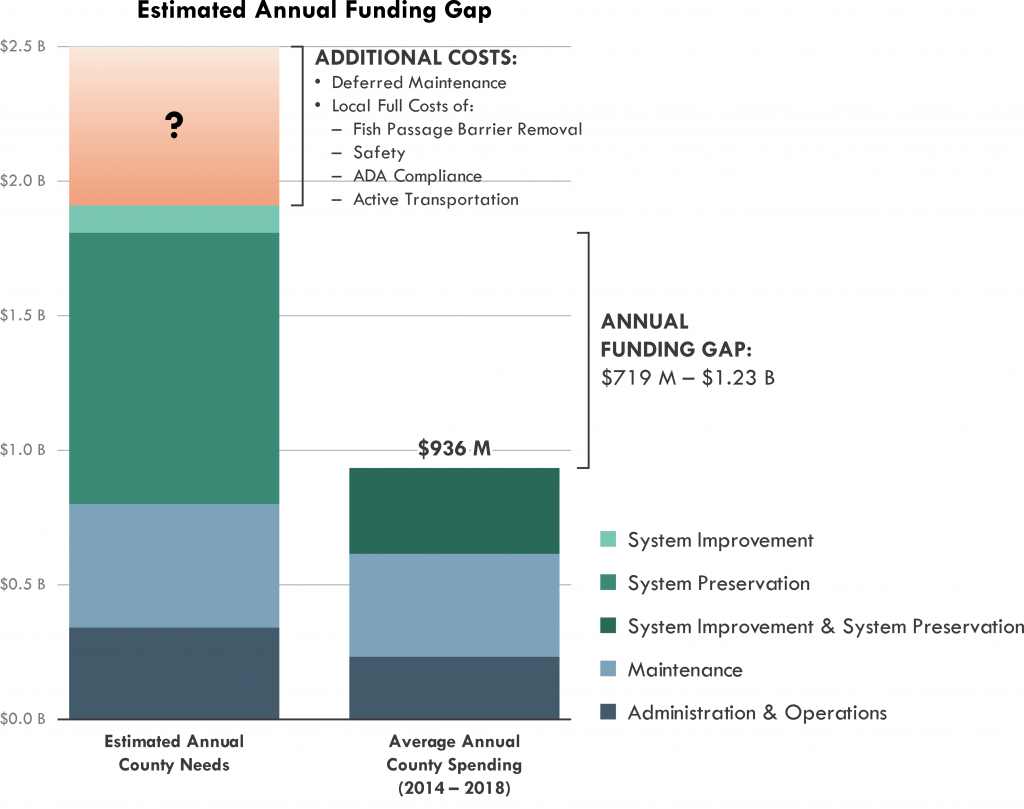County Transportation Study
The study identifies structural funding concerns that we believe are critical for state lawmakers to understand and meaningfully address.
The unsustainable reality is: County transportation budgets are going backward. Counties’ transportation dollars, when adjusted for inflation, are fewer than they were twenty years ago. Existing limitations on counties’ ability to keep pace with growing obligations have created an annual transportation funding gap of at least $1 billion.

The reasons, as mentioned, are structural. Revenues are constrained both from state and local sources: Counties are receiving a declining share of state gas tax allocations, while property tax bases are diminished by annexations and incorporations and are capped by the statutory one-percent limit (plus new construction). Meanwhile, county transportation costs and obligations are growing, including deferred maintenance costs coming due, expanded environmental regulatory costs, massive replacement costs for bridges approaching the end of their lifespans, and fulfilling our obligation to replace fish passage barriers on county roads.

When counties are responsible for 60 percent of the roadways and 45 percent of the bridges in our state, this mounting structural funding gap carries real consequences for communities throughout Washington.
At a very high level, our recommended solutions to address this structural gap include:
- Increasing state investment for preservation and maintenance, specifically through CRAB’s CAPP and RAP programs
- Implementing a federal fund exchange program
- Increasing the county share of the gas tax
- Expanding or enhancing local county transportation funding options

